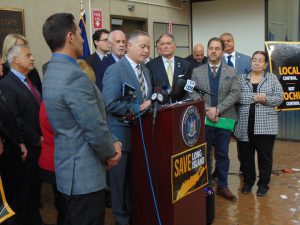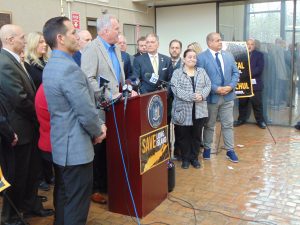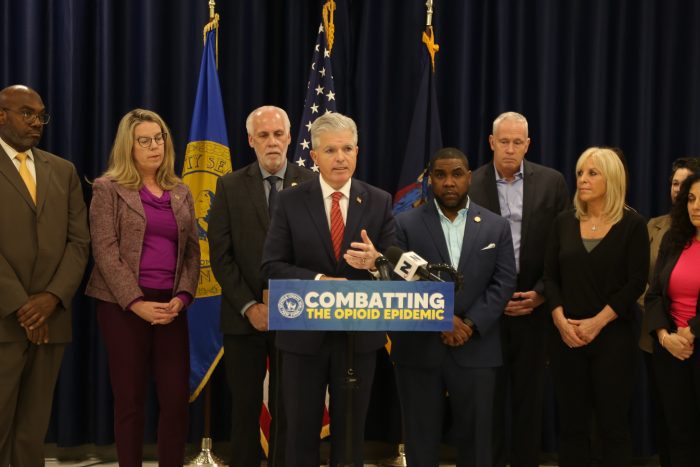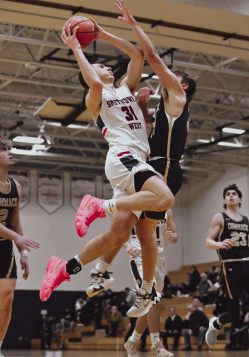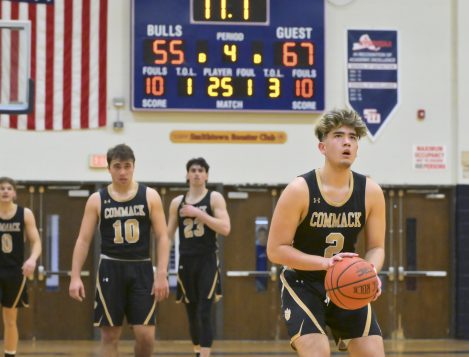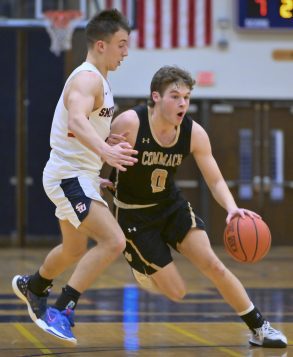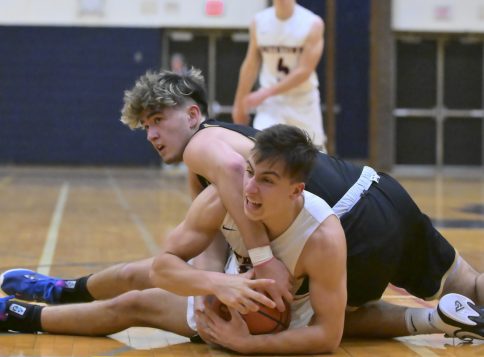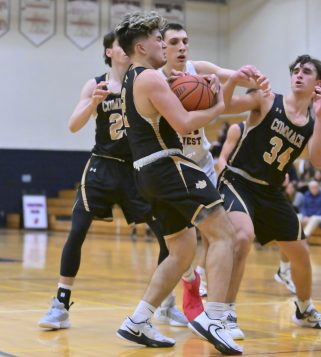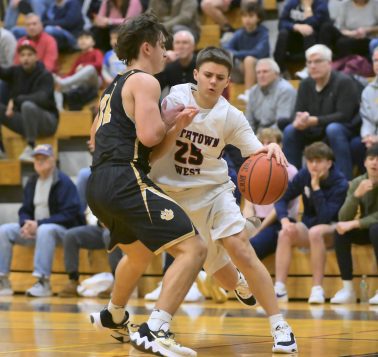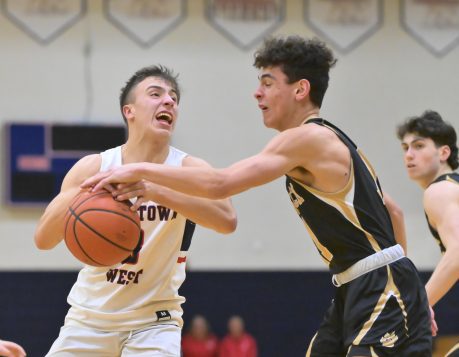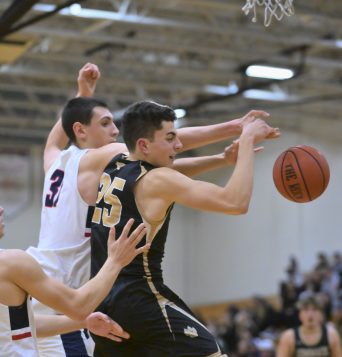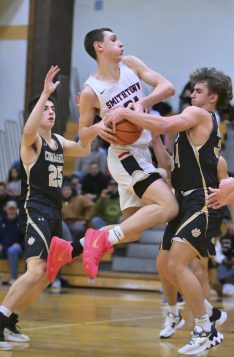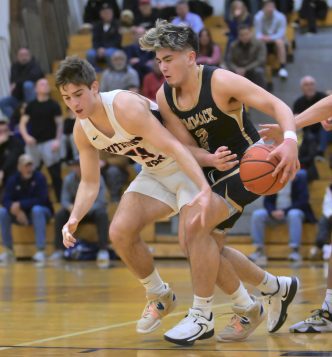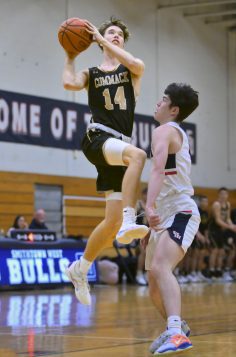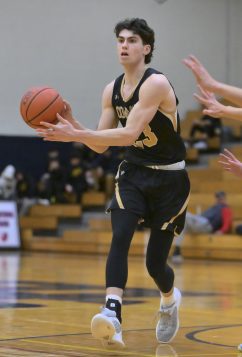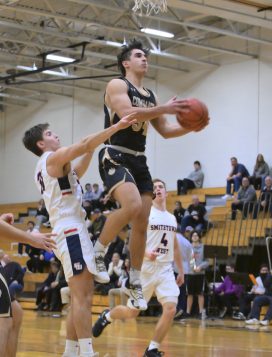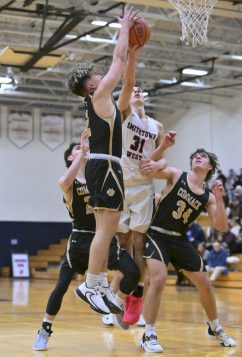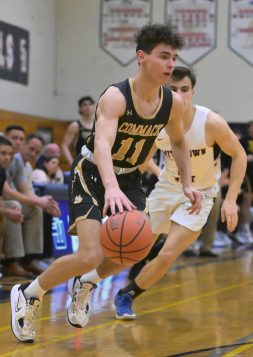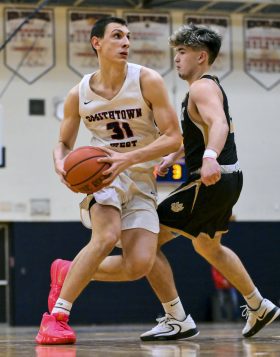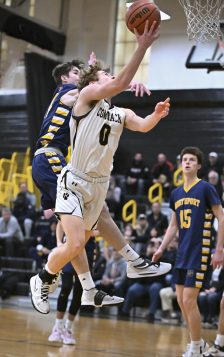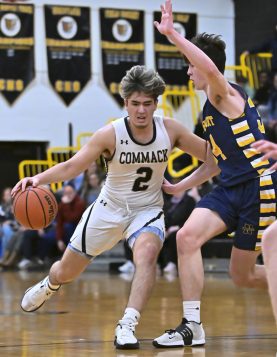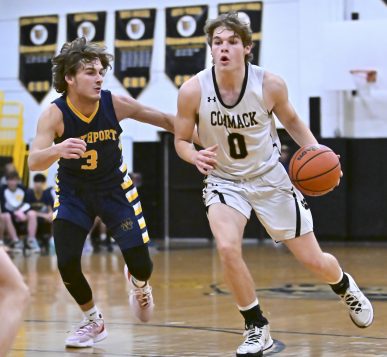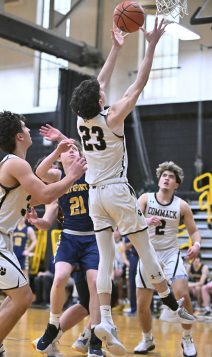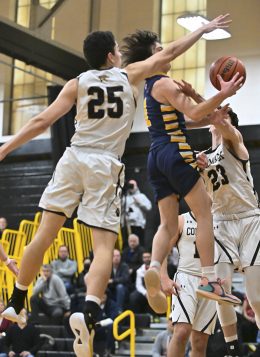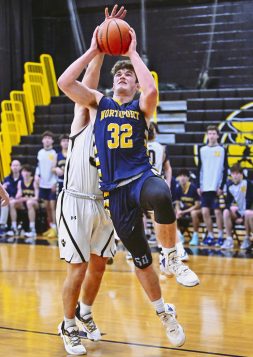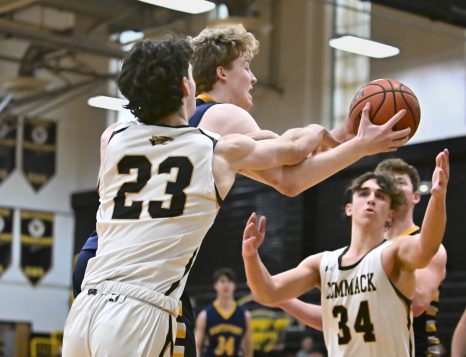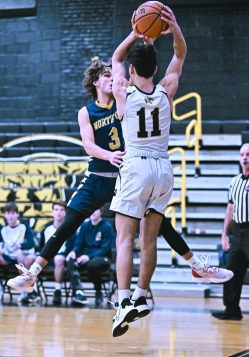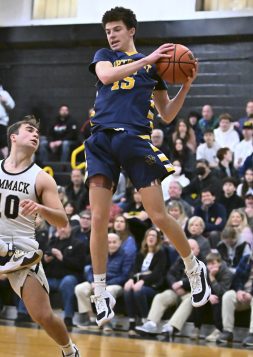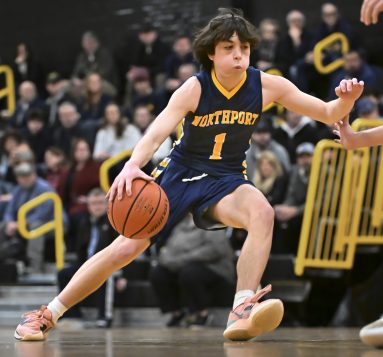By Rita J. Egan
Few movies easily translate into an onstage musical. Dirty Rotten Scoundrels, which opened Thursday at the John W. Engeman Theater in Northport on Jan. 19, is one of those delightful exceptions.
Based on the 1988 comedy film starring Michael Caine, Steve Martin and Glenne Aimee Headly, the production, with book by Jeffrey Lane, features a catchy score by David Yazbek. The musical originally debuted on Broadway in 2005 and was nominated for several Tony Awards the same year. Norbert Lee Butz won the award for Best Performance by a Leading Actor in a Musical for his portrayal of Freddy Benson.
The story begins at a luxurious coastal resort where suave con artist Lawrence Jameson meets his young competitor Freddy Benson. Lawrence realizes his longtime deceptions of guests may soon come to an end. With the help of his assistant, local police chief Andre Thibault, he decides to take the rough-around-the-edges Freddy under his wing. The con artists’ mission turns out to be filled with hilarious hijinks, a dash of romance and a surprising twist.
Musical lovers looking to beat the winter blues will love the Engeman’s Dirty Rotten Scoundrels with the actors’ exceptional vocals and comedic timing. Audience members should pay attention as some local references and mild political jokes are thrown in, which garnered a good deal of laughter during the press opening on Jan. 21. The night was one where all the cast members, masterfully directed by Drew Humphrey, shined brightly.
James D. Sasser plays Lawrence Jameson with the right amount of sophistication and cockiness, and at the same time keeps the audience laughing. He also handles his vocals beautifully while maintaining his character’s various deceptive accents.
Danny Gardner, as Freddy Benson, is hilarious, especially during the musical number “Great Big Stuff.” During one scene, with Freddy dressed as a soldier confined to a wheelchair, Lawrence tests him to see if he has any feeling in his legs using a feather and then a whip. The duo are hysterical during the scene, and Gardner’s facial expressions are priceless.
Gina Milo plays Muriel Eubanks, a wealthy and attractive American socialite, to the hilt. She has fun with all the cliches believed about a newly divorced woman traveling abroad — flirty and clueless — and the audience laughs along with her. Milo’s vocals are excellent in each number she is featured in.
The character Andre Thibault serves as a straight man to Jameson and Benson, and Matthew Bryan Feld is perfect in the role. In the second act, he seamlessly shows the character’s vulnerable side when he and Milo perform a fun and refreshing “Like Zis/Like Zat.”
While Emily Larger doesn’t appear until toward the end of Act 1 as Christine Colgate, she is immediately convincing as a naive American heiress, and one can’t help feel excited for the character as Larger delivers a fabulous rendition of “Here I Am.” In the second act, Larger has the opportunity to show another side of Christine, which she delivers just as smoothly.
Suzanne Mason, as Jolene Oakes, one of Lawrence’s victims, shines in the role. Her musical number “Oklahoma?” is one of the highlights of the show. Her comedic abilities are front and center in Dirty Rotten Scoundrels, even when she isn’t playing Jolene and is onstage as one of the ensemble characters.
The ensemble also adds to the production’s delightfulness with their witty lines and facial expressions, and performing the fun dance numbers choreographed by Mandy Modic. Set designer Kyle Dixon and costume designer Dustin Cross have used colorful hues that transport audience members to the French Riviera. And while they may not be onstage, the Engeman orchestra members, directed by James Olmstead, are among the stars of the show.
Entertainment has always served as a way to escape everyday life, if only for a couple of hours. The Engeman’s production of Dirty Rotten Scoundrels does just that with upbeat music and plenty of laughs that will leave audience members feeling a bit more lighthearted even after exiting the theater.
The John W. Engeman Theater, 250 Main St., Northport presents Dirty Rotten Scoundrels through March 5. Showtimes are Thursdays, Fridays, Saturdays and Sundays and some Wednesdays. Tickets are $85 for Saturday evenings and $80 for all other performances. For more information, call 631-261-2900 or visit www.engemantheater.com.










